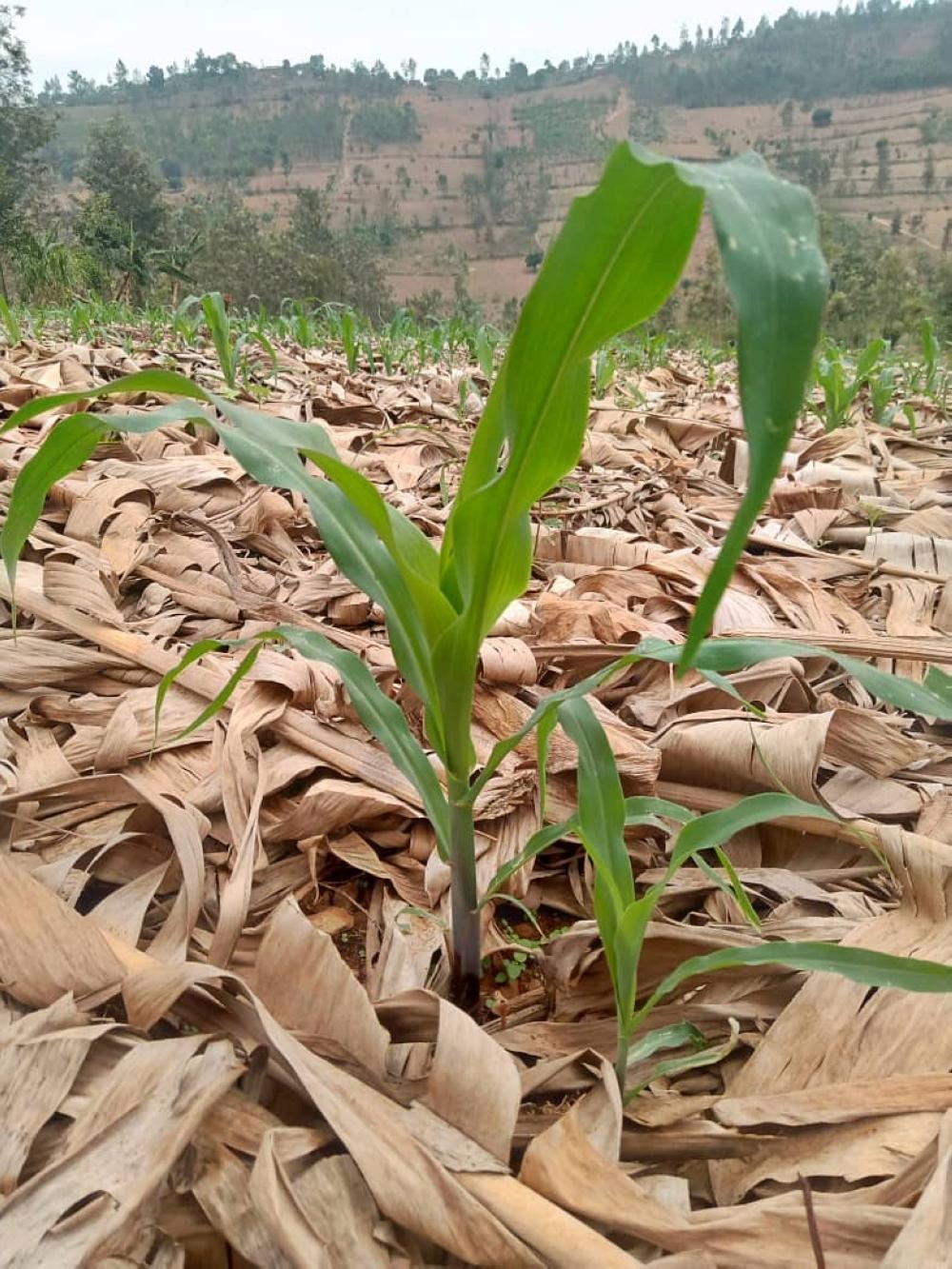Africa-Press – Rwanda. Once plagued by frequent droughts and low yields, farmers in Ngoma, Kirehe, Kayonza, and other districts in Eastern Province are embracing climate-smart agriculture (CSA) to boost productivity, conserve soil, and build resilience to climate shocks.
Espérance Uwizeyimana, 54, a mother of five and member of Terimbere Muhinzi Cooperative in Gahara Sector, said the new approach has transformed her harvests while cutting costs.
“I used to scatter seeds randomly and waste fertiliser,” she said. “Now I prepare seedbeds properly and use less input for better yield.”
Espérance Uwizeyimana,54, and a mother of five, is a a member of Terimbere Muhinzi Cooperative in Gahara Sector, according to her, the approach has transformed her harvests and reduced farming costs.
Uwizeyimana adopted Pfumvudza, a conservation farming method developed in Zimbabwe under the Joint Programme on Rural Women’s Economic Empowerment (JP RWEE), a UN Women, FAO, IFAD, and WFP initiative supported by INADES Formation Rwanda.
The technique focuses on clearing weeds without ploughing, digging small basins in straight rows, mixing manure and fertilizer, and covering soil with mulch to retain moisture.
“Before Pfumvudza, I harvested about 27 kilograms of maize per acre,” Uwizeyimana said. “Now I get around 108 kilograms from the same land.”
Encouraged by the results, her cooperative expanded from one acre of trial plots to 60 acres and expects over five tonnes of maize this season. Many farmers have since replicated the technique in home gardens, helping control pests, reduce erosion, and enrich soil fertility.
Uwizeyimana said farmers tested three methods which are; Climate Smart Agriculture, Integrated Pest Management, and traditional farming—on equal plots.
“Smart agriculture produced 108 kilograms of maize per acre, IPM gave 73, and traditional farming only 23,” she said.
According to Cyriaque Nyiridandi Mapambano, Ngoma District’s Vice Mayor for Economic Development, the district is scaling up CSA to increase yields and protect the environment.
Formerly a drought prone region with low yileds, addopting Climate Smart Agriculture encouraged minimal soil disturbance, crop rotation, and maintaining crop cover to manage pests while increasing yields.
“We’ve trained agronomists to help farmers adopt these practices,” he said. “In our food basket zones alone, we have 250 sites covering 19,000 hectares, and we’re working to double production under NST2.”
Climate-smart agriculture promotes minimal soil disturbance, crop rotation, and crop cover to conserve moisture and enhance resilience to drought.
The government is scaling up the initiative through the Rwanda Climate Smart Agriculture Investment Plan (CSA-IP) launched on June 18, 2025, by MINAGRI, the Rwanda Green Fund, and the International Finance Corporation (IFC).
Minister of Agriculture Dr. Mark Cyubahiro Bagabe said the plan aims to tackle challenges such as erratic rainfall, soil degradation, and post-harvest losses.
“This plan supports Rwanda’s goal of building a climate-resilient, productive agriculture sector,” he said. “It aligns with the national strategy for food security and economic growth.”
The CSA plan targets 83,250 hectares of farmland for efficient water use and improved soil health. It will also link 170,200 farmers and 375 agribusinesses to climate-smart financing, attracting more than $335 million (Rwf449.7 billion) in private investment for sustainable agriculture.
For More News And Analysis About Rwanda Follow Africa-Press








